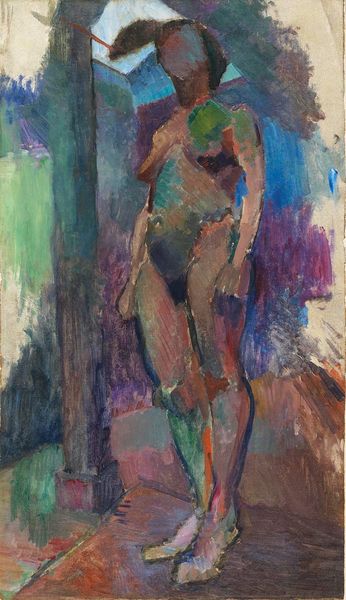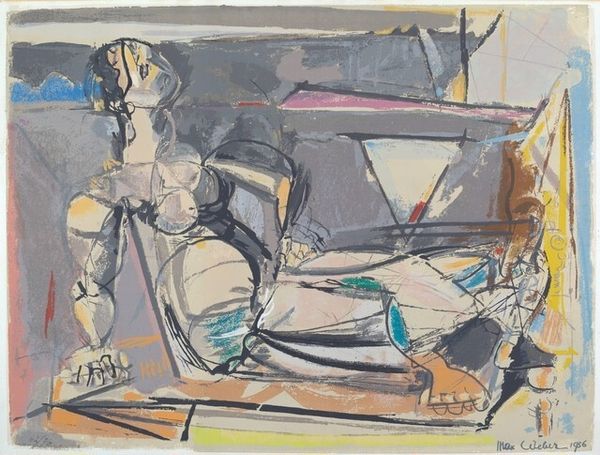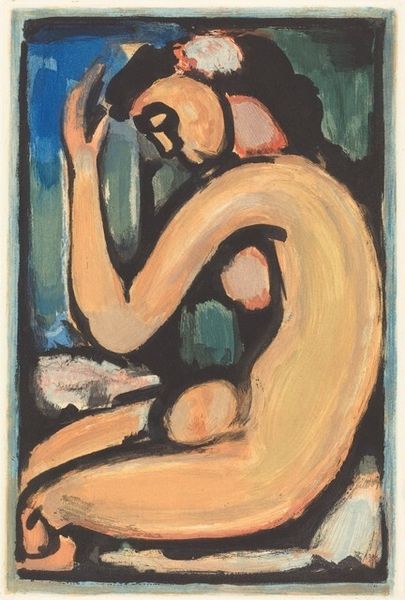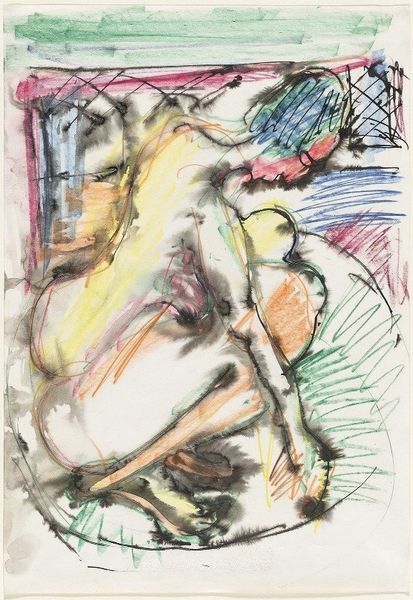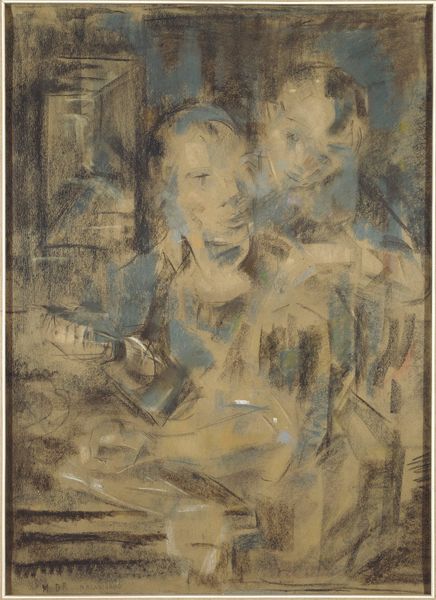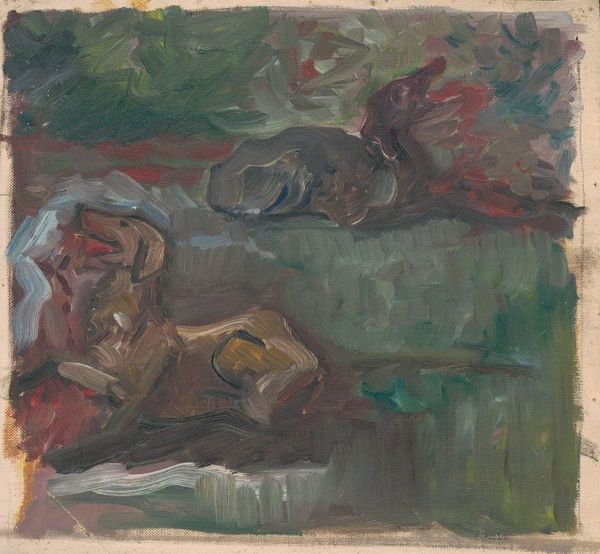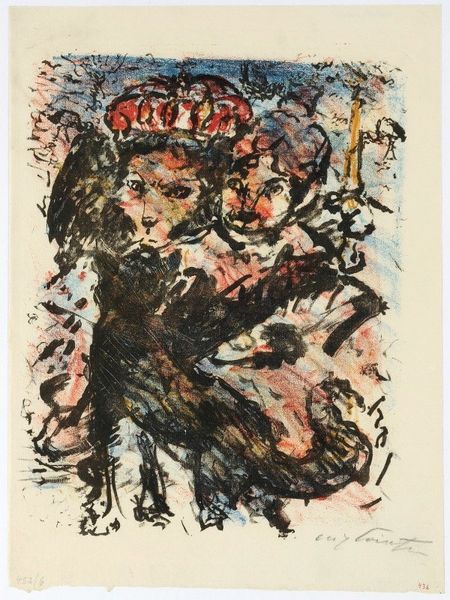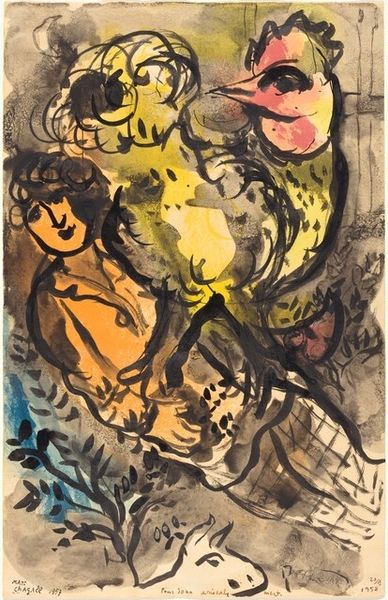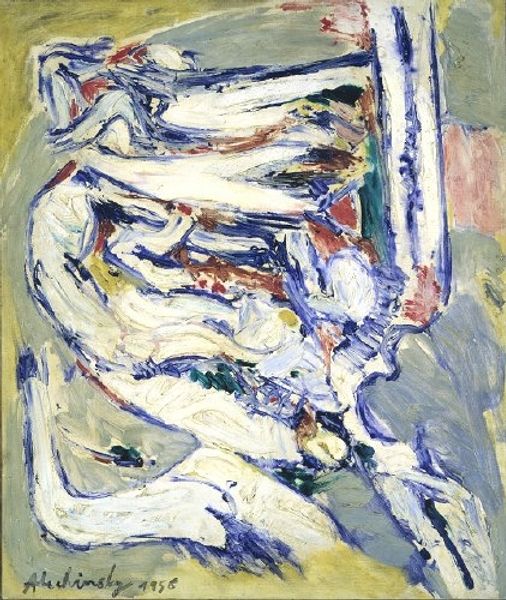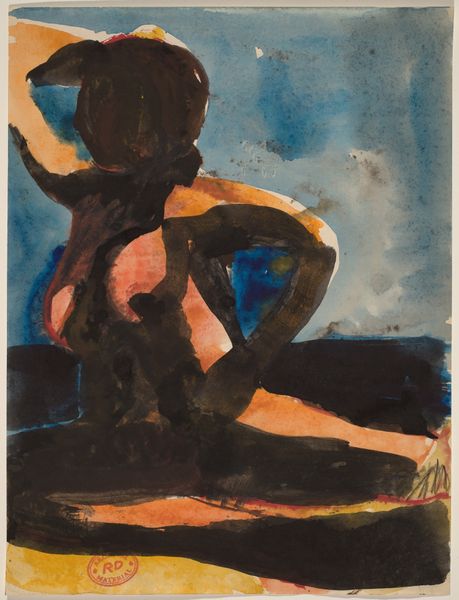
drawing, painting, watercolor
#
portrait
#
drawing
#
painting
#
figuration
#
watercolor
#
intimism
#
expressionism
#
watercolor
Dimensions: Overall: 38.6 x 28.6 cm (15 3/16 x 11 1/4 in.) framed: 56.6 x 47.6 x 5.3 cm (22 5/16 x 18 3/4 x 2 1/16 in.)
Copyright: National Gallery of Art: CC0 1.0
Curator: What immediately strikes me about this watercolor is its palpable melancholy, a somber atmosphere clinging to these figures in what Georges Rouault titles "Café Scene," created in 1906. Editor: Melancholy, yes, but look at how Rouault achieved it! He built this world, or perhaps a shadow of a world, with layers of diluted watercolor. Observe how the fluid washes, almost brutally applied, allow the underlayers to bleed through, creating a kind of raw, immediate document of both form and affect. It reflects the socio-economic realities inherent in a rapidly industrializing France. Curator: The bleeding hues definitely add to the sense of unrest. I’m wondering about the sitters – those shadowy figures, trapped, or perhaps choosing to be in the shadowy café interior. Do you think it represents some deeper unrest beyond just its visible, material execution? Editor: Without a doubt! The subject is expressionistically rendered, faces dissolving into distorted masks, almost devoid of specificity. The female figure is presented from an oblique angle, one eye seemingly stretched, features collapsing. She, and the companion that recedes into the ground beyond, becomes a symbol, embodying alienation amid social spaces of fleeting connection and consumption. Note the glass that stands between them. Curator: Consumption and alienation; this reading reminds me how critical Rouault was about social inequalities of his time. But there's also an intimacy to the watercolor technique here—it's fragile, quick, revealing. The gestural application brings a vulnerability despite the rather grim subject. Do you see that interplay at all? Editor: Exactly! We cannot neglect Rouault’s engagement with mass printing either! The very material nature of drawing here invites such considerations. His engagement with these themes extended beyond painting. The rapid execution becomes part of the art work’s conceptual project, critiquing commodification and disposability prevalent in consumer society. Curator: I like how the very quick, almost careless technique reinforces his perspective about quick or dismissive ways people in a café engage with one another. A kind of production that mirrors theme. It's quite bleak. Editor: Yes, bleak, but powerfully bleak. This artwork offers us not only aesthetic enjoyment but also spurs thoughtful meditation about society's margins—and perhaps our own roles within it. Curator: Indeed, it makes you ponder the hidden costs of even fleeting moments of pleasure and disconnection, especially during a turning-point period for modern Europe.
Comments
No comments
Be the first to comment and join the conversation on the ultimate creative platform.
